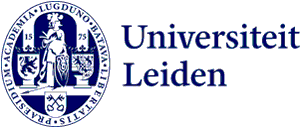
Escaping from a sarcophagus: students from the Living Education Lab minor create an educational tool
How do students start asking more questions on a museum visit? Let them free an Egyptian princess from a sarcophagus! In the minor Living Education Lab, students from TU Delft, Leiden University and Erasmus University Rotterdam designed an escaperoom.

Asking questions to free princess
Teachers want students to participate in a museum visit actively so that it is fun and meaningful. The problem is that pupils do not ask questions because they do not know the environment or the tour guide. Moreover, they are not used to asking questions or do not know how to do so. Students tackled this with pupils from 1 vwo. They designed a virtual escape room assignment for use at the National Museum of Antiquities. Pupils are given an audio tour and hear an Egyptian princess, Amara, call for help. They have to free her from a sarcophagus in which her evil sister has trapped her. Pupils ask questions and must find connections and objects in the museum that will help free Amara. The chatbot provides immediate feedback, increasing pupils' engagement. At the end, they can see how well they did compared to other classes.

Systematic approach and creativity
Albert Logtenberg (ICLON) is one of the teachers in the minor and a 'stakeholder' in this project: 'I am very positive about the product that 'my' group has delivered. As a teacher and researcher, I have thousands of ideas that are not always sustainable or viable. Through the thinking and systematic approach of this group, I now have useful input for my project and we are one step closer to implementing it. It is clever how the students bring focus to an open, unstructured problem while not losing sight of creativity. I have the impression that the students themselves also had fun. After all, how much fun is it to make something for others while also regularly wandering around the museum?'
Developing a prototype
In the second part of the Living Education Lab minor, students applied what they learnt in the first part of the minor. Using the design thinking method, they worked in groups to develop a solution to an education professional's problem. In consultation with this stakeholder, led by lecturers from the three universities, the students explored their target group (empathise), researched the problem definition (define), thought about possible solutions (ideate), and developed (prototype) and tested a solution (evaluate).

One group designed the escape room game that makes students curious and ask more questions during the museum visit. Another group designed a real game-box containing four games. Each game promotes algorithmic thinking and/or programming skills of students in a different way.
Minor Living Education Lab
This minor combines the domains of design thinking and technology-enhanced learning and teaching with interdisciplinary group work. It is meant for students who
- Are interested in education and digital technology and want to experience what it is like to solve a real-life problem in a multidisciplinary group of peers and education professionals;
- Want to look behind the scenes of higher and secondary education;
- Are interested in the impact of Educational Technologies.
This minor came about through a collaboration between Leiden University, TU Delft and Erasmus University Rotterdam.
Photography: ICLON/Louise de la Motte
